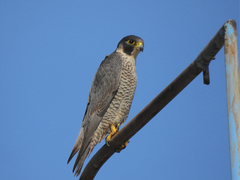Mute swan
Cygnus olor
Aves Cygnus olor, commonly known as the mute swan, is a large waterfowl species native to Europe and Asia. It is widely recognized for its elegant appearance and distinctive physical characteristics.
Physical Description:
- The mute swan is notable for its graceful long neck and pristine white plumage.
- It typically weighs between 11-12 kilograms, making it one of the heaviest flying birds.
- Adults possess an orange bill with a prominent black basal knob, which distinguishes them from other swan species.
- Their wingspan ranges from 2.0 to 2.4 meters, providing them with significant glide capacity during flight.
Behavior and Habitat:
- Mute swans are known for their serene demeanor, often seen gliding smoothly on lakes, rivers, and in marshes.
- Unlike their name, they are not completely silent; they occasionally make snorting and whistling sounds.
- These swans are territorial, especially during the breeding season, and can become aggressive to protect their nests.
- They are primarily found in inland and coastal water bodies in the Comunidad Valenciana, where they are an important part of the local ecosystem.
Diet:
- The diet of Cygnus olor consists largely of aquatic vegetation, which they reach with their long necks.
- They may also consume small invertebrates and fish.
Reproduction:
- Breeding pairs are monogamous and often mate for life.
- Nesting usually occurs on water in reeds or on islands, with the female laying 5-7 eggs per clutch.
- Both parents are involved in incubating the eggs and protecting the young, which are called cygnets.
Conservation Status:
- The mute swan is not currently considered at risk, with stable and widespread populations across suitable habitats.
This majestic bird is a cherished sight in the wetlands of the Comunidad Valenciana and embodies the natural beauty of the region's avian fauna.







